As the culmination of my practical and historical research into ukiyo-e and mokuhanga I chose to create this blog post of the full process of making two different editions of a koi fish print and a short glossary of terms as I have particularly enjoyed learning these Japanese words and the correct terms for different materials and tools used in the process.
Glossary
- Ukiyo-e – Literal meaning – ‘Pictures of the Floating World’ – refers to a style of Japanese woodblock print and painting from the Edo period depicting famous theater actors, beautiful courtesans, city life, travel in romantic landscapes, and erotic scenes
- Mokuhanga – woodblock printing is known as mokuhanga – moku means wood and hanga means print
- Ō-ōban – extra large print format approx 30 by 55cm.
- Tan – distinctive orange-red colour used in woodblock prints
- Urushi-e – lacquer pictures
- Benizuri-e – the earliest true colour prints
- Nishiki-e – first full colours prints.
- Edo – former name of Tokyo city
- Shunga or makura-e or warai-e – sexually explicit pictures – made for shunpon or ehon or enpon -sexually explicit books
- Hangi-toh – the knife
- Maru-nomi and komasuki – the U-gouge family
- Soli-Nomi and Aisuki – the fan-beveled chisel family
- Sankaku-toh – the V-gouge
- Kento-nomi – straight chisel for kento cutting
- Baren – handheld printing disk
- Hanga bake – brush used to apply the colour mixture to the block
- Mizu bake – used to apply water and dampen the paper before printing
- Nori – starch paste – used to bind and disperse the pigment colour
- Washi paper – translucent Japanese printing paper used in mokuhanga
Sumi – ink made from pine soot and animal glue
Process – the carving and printing process are the same as described in my previous post about the mokuhanga process including the tools and the order of use.
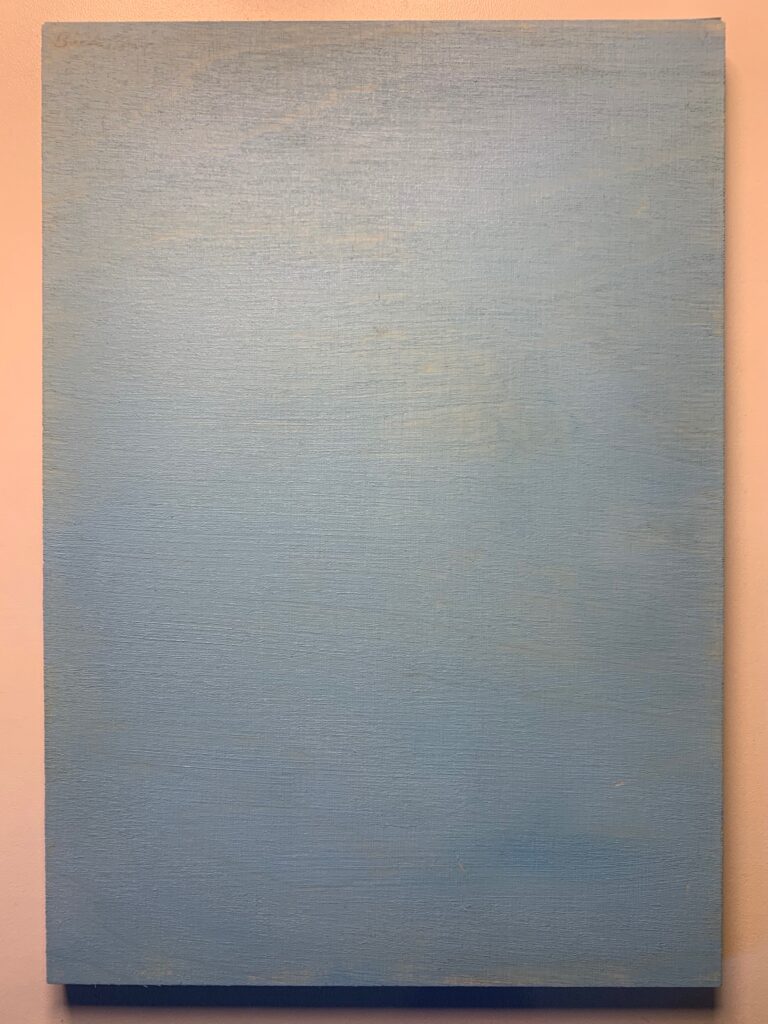 First block – plain light blue colour.
First block – plain light blue colour.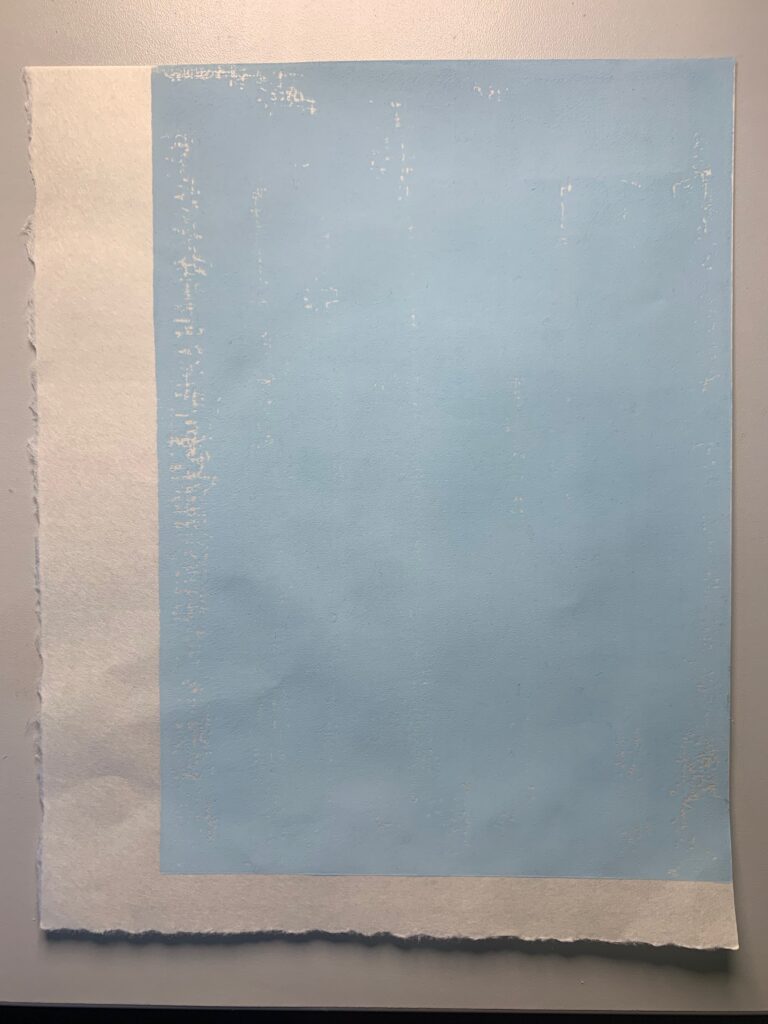 Light blue plain block printed on Washi.
Light blue plain block printed on Washi.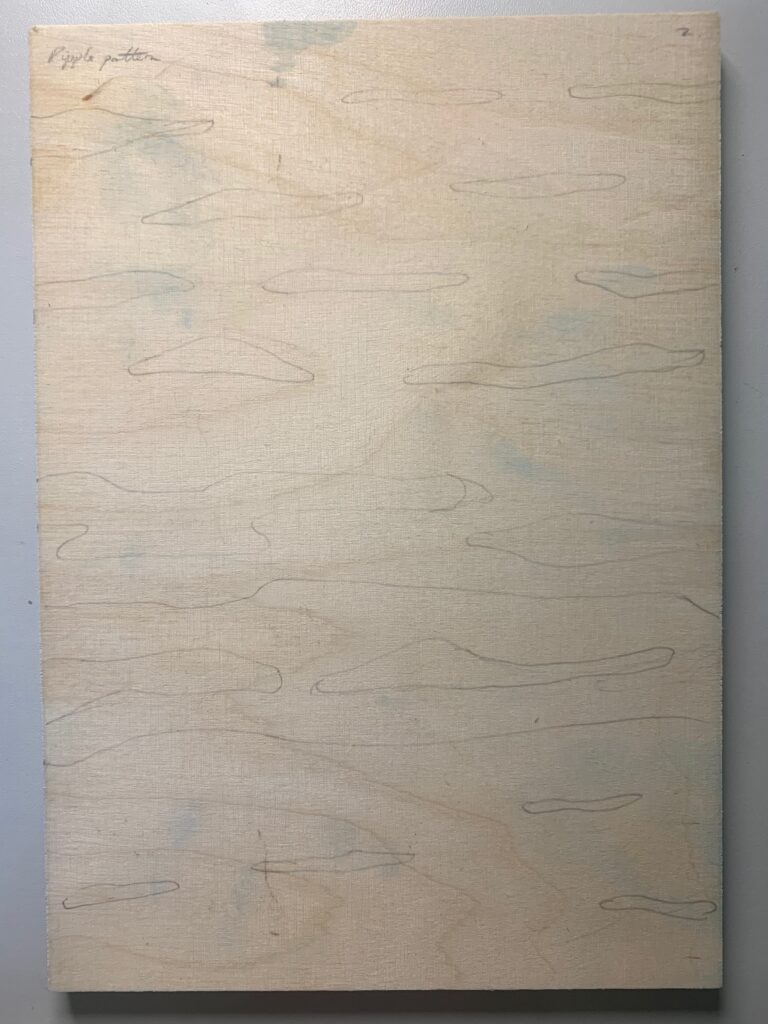 Ripple pattern drawing on block.
Ripple pattern drawing on block.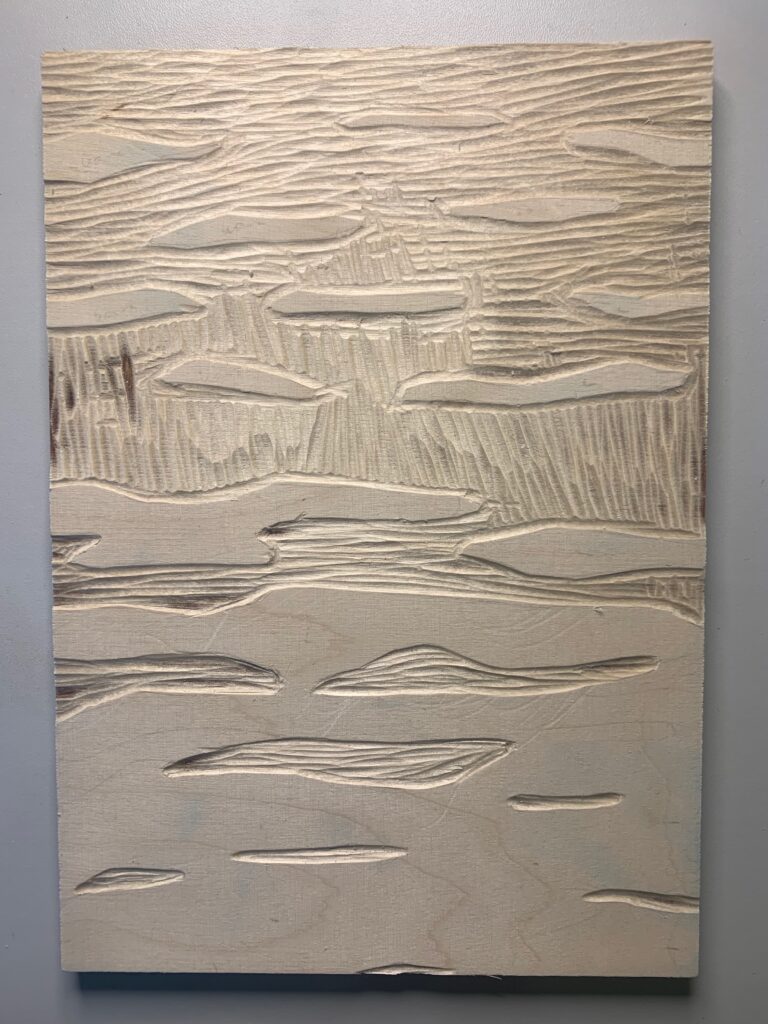 Carved ripple pattern block
Carved ripple pattern block Ripple pattern in dark blue colour printed on top.
Ripple pattern in dark blue colour printed on top. Koi fish design.
Koi fish design.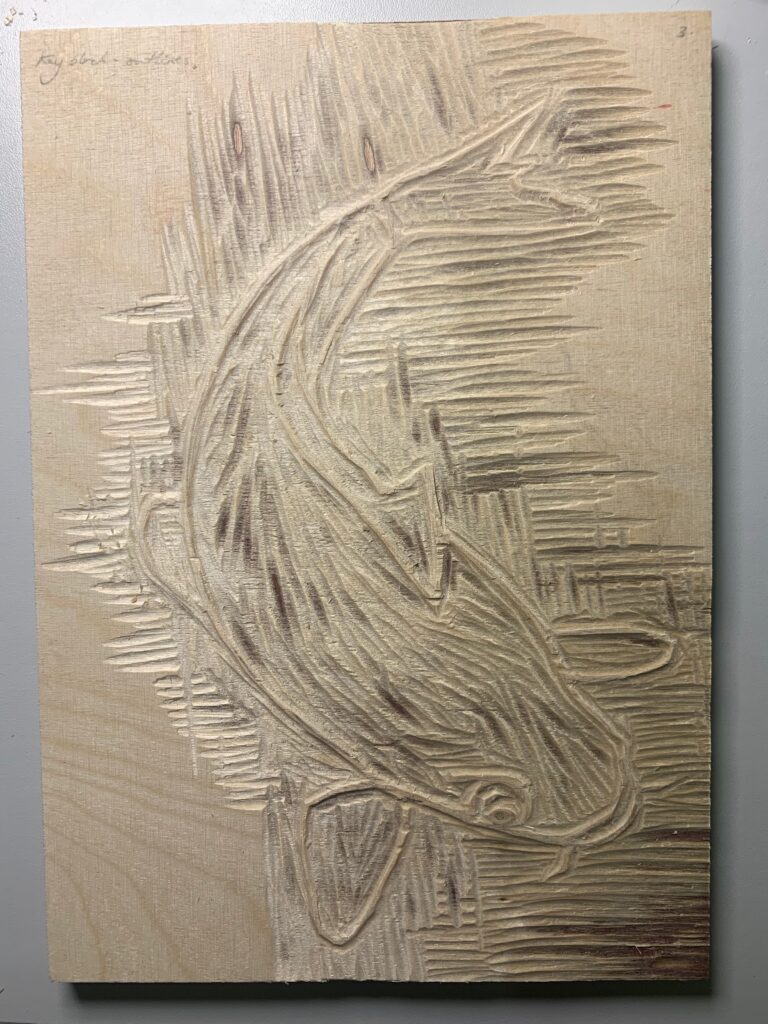 Carved block leaving just the key outlines to be printed.
Carved block leaving just the key outlines to be printed.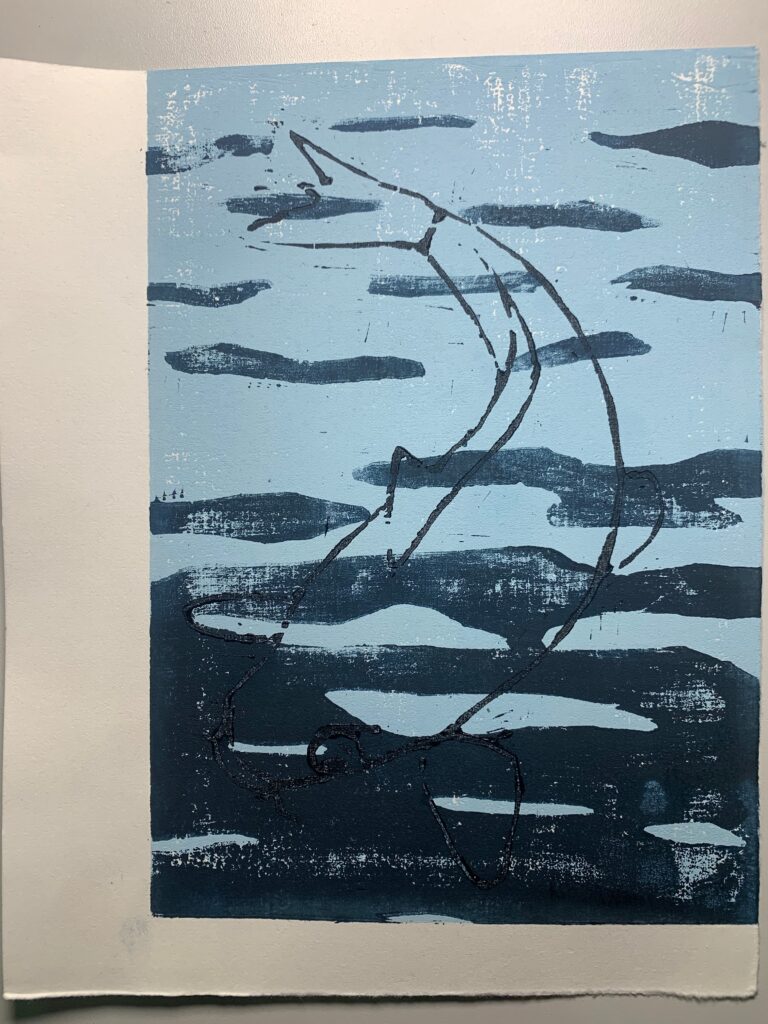 Outlines printed onto the background.
Outlines printed onto the background.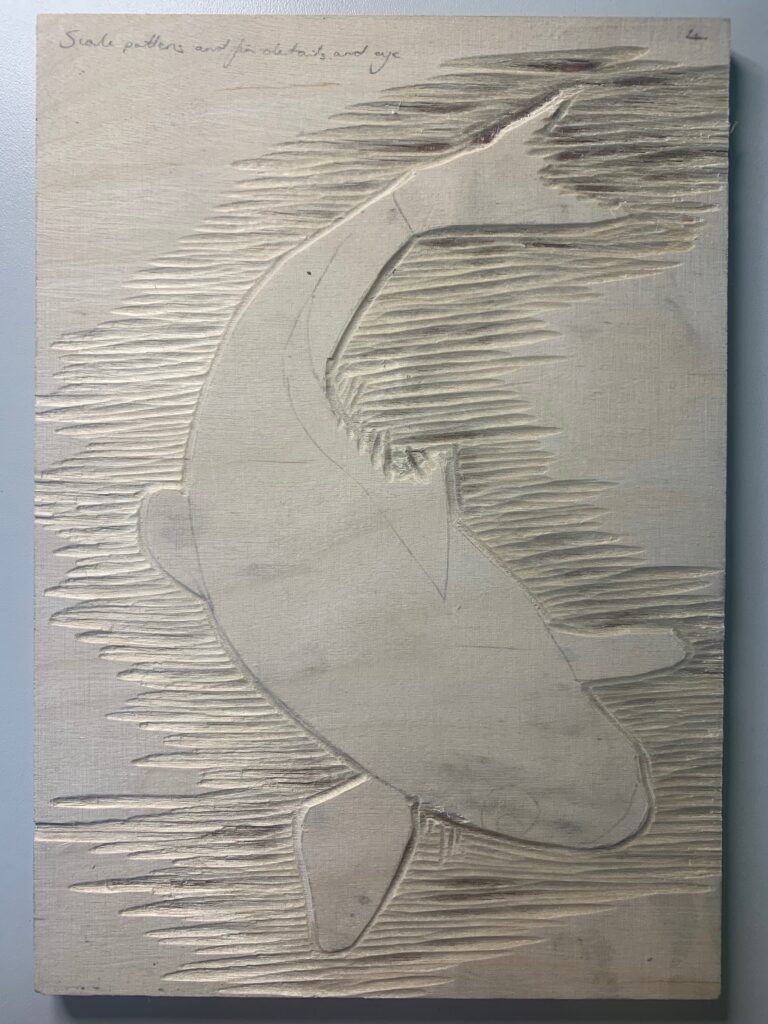 Carved block of the block shape of the koi fish.
Carved block of the block shape of the koi fish.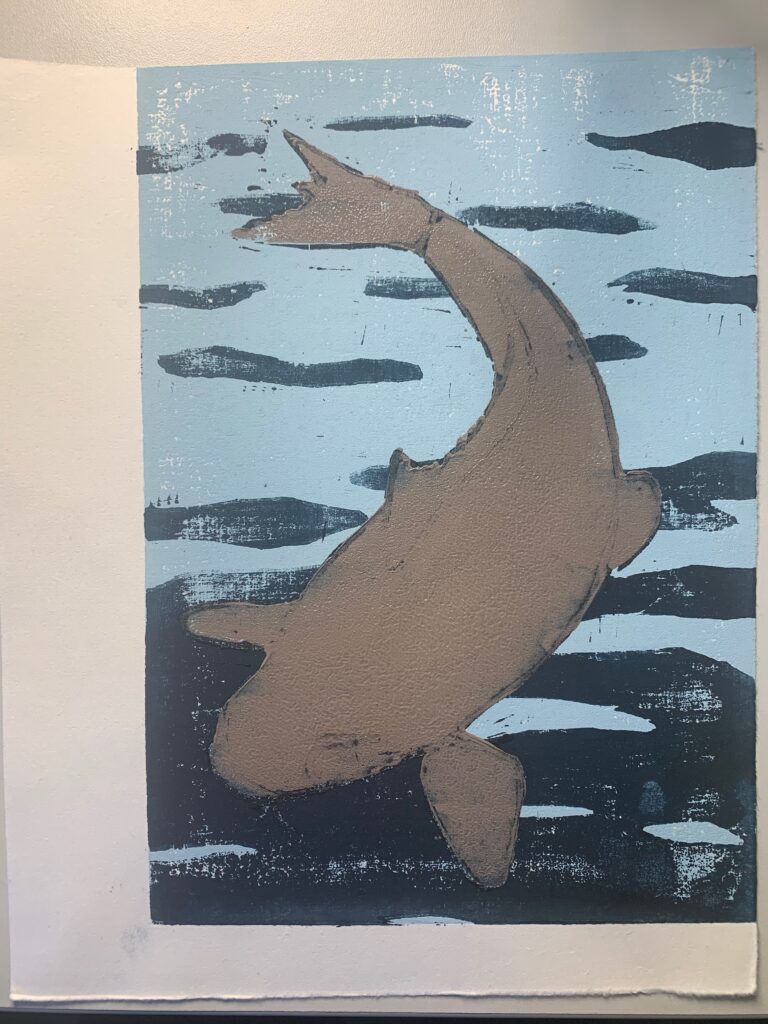 Printed the grey block shape of the koi.
Printed the grey block shape of the koi.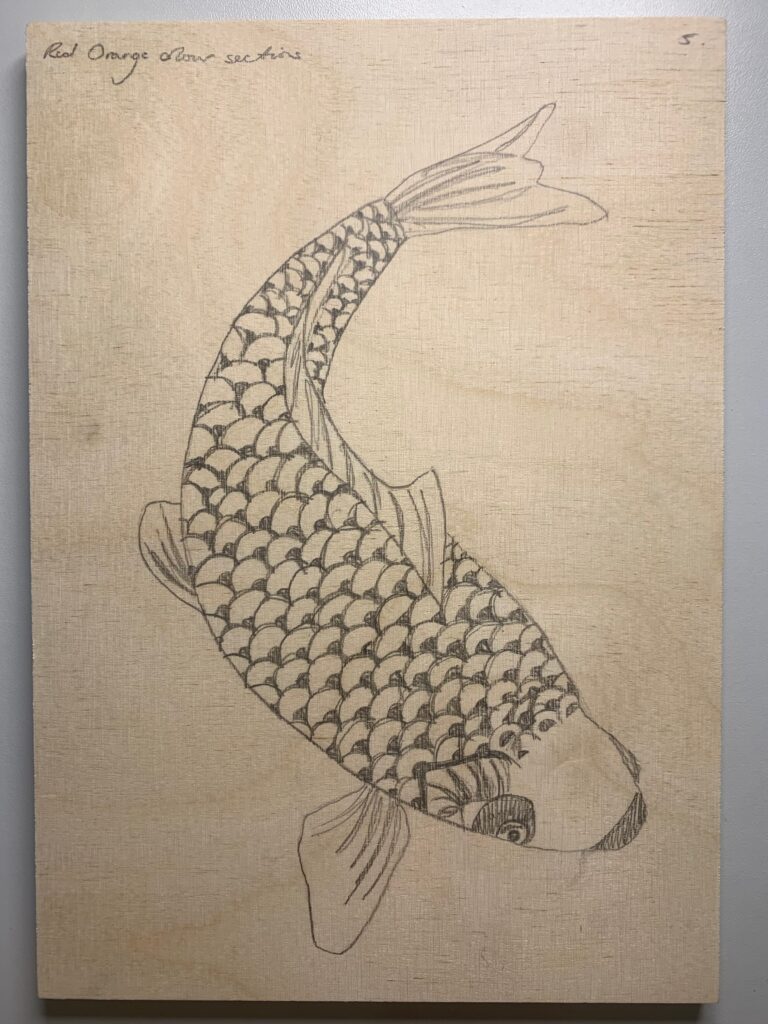 Scale design drawn on the block.
Scale design drawn on the block. Carved block with scales and other details on fins and eye.
Carved block with scales and other details on fins and eye.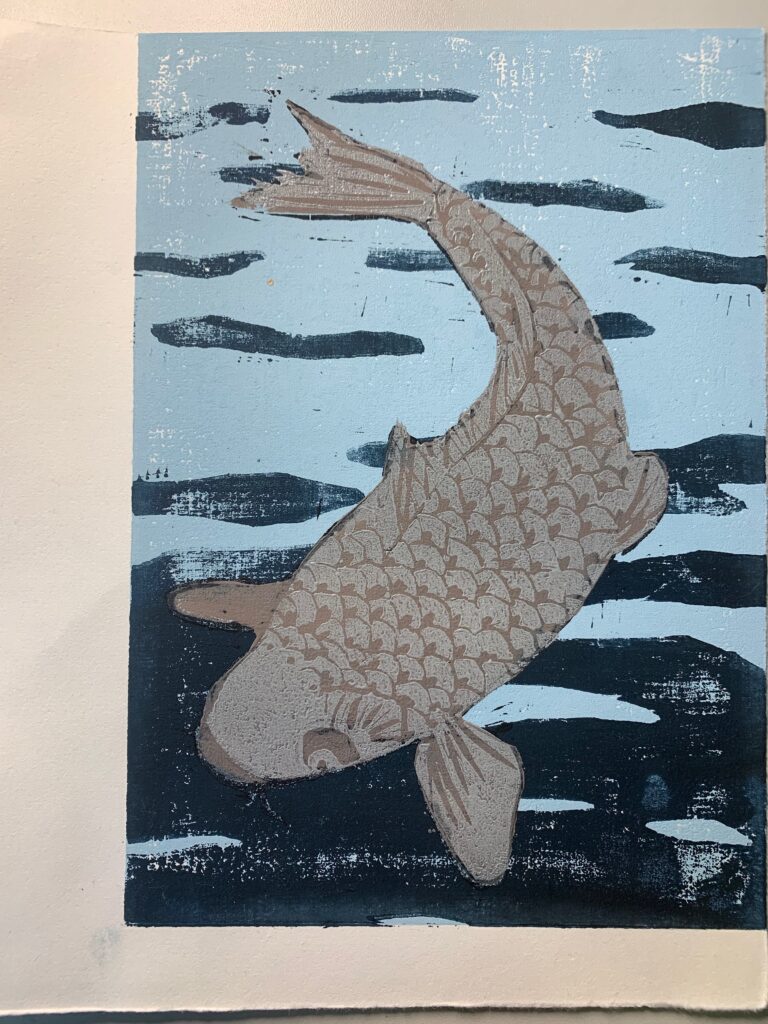 Scales and details printed in a lighter grey shade.
Scales and details printed in a lighter grey shade.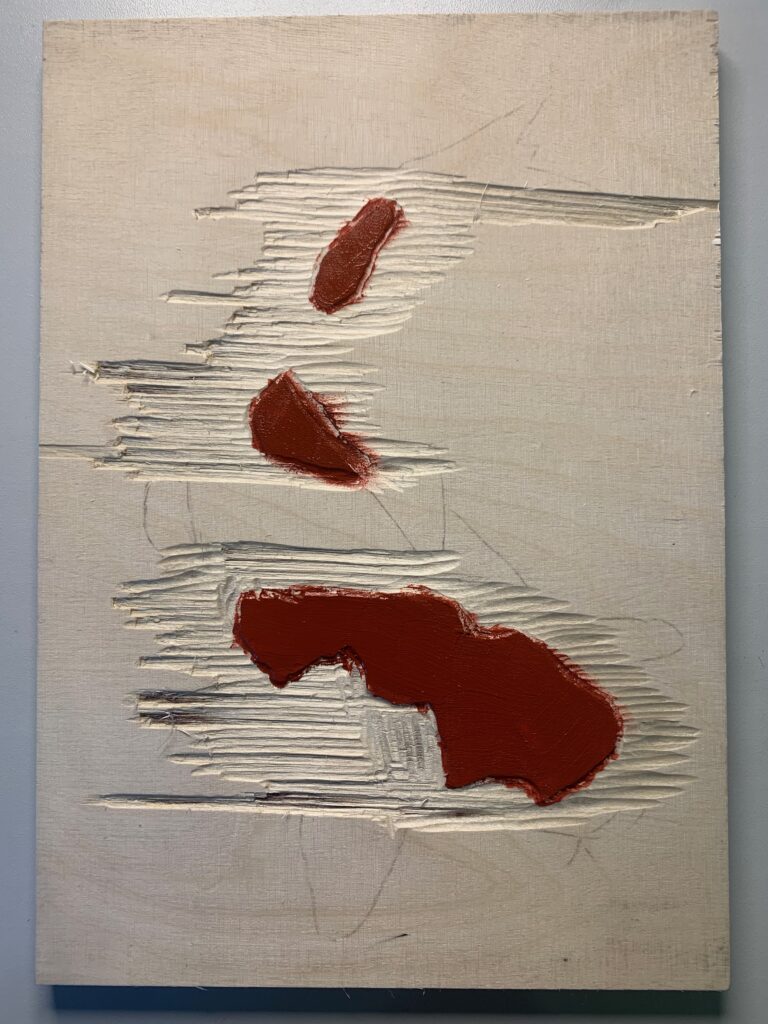 Carved block with red sections and ink – I used this shade for a practice edition but decided to use a different shade for my final edition.
Carved block with red sections and ink – I used this shade for a practice edition but decided to use a different shade for my final edition. Printed the distinctive koi fish orange sections.
Printed the distinctive koi fish orange sections.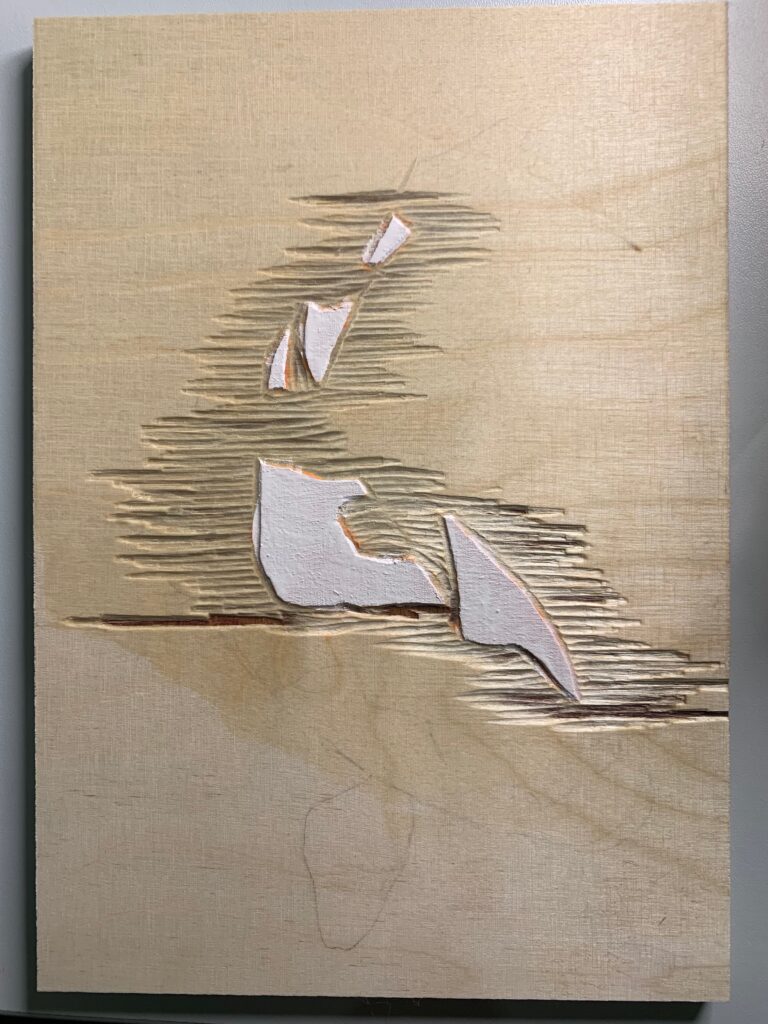 Carved block with white sections of the koi fish.
Carved block with white sections of the koi fish. Koi fish printed with white and orange sections.
Koi fish printed with white and orange sections. Carved block of details of the fins and face in black.
Carved block of details of the fins and face in black.
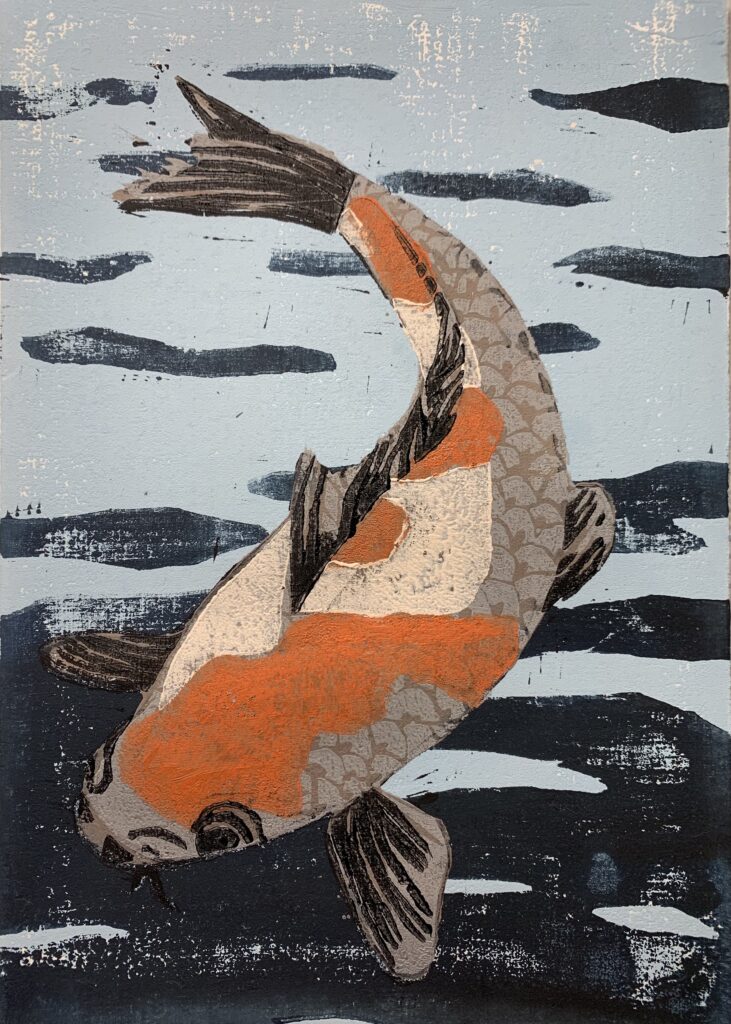
Koi, 17x24cm, Mokuhanga print, Stella MacDougall 2020.
Finished Mokuhanga print with black details.
I also made an edition of the woodblock print without the blue background:
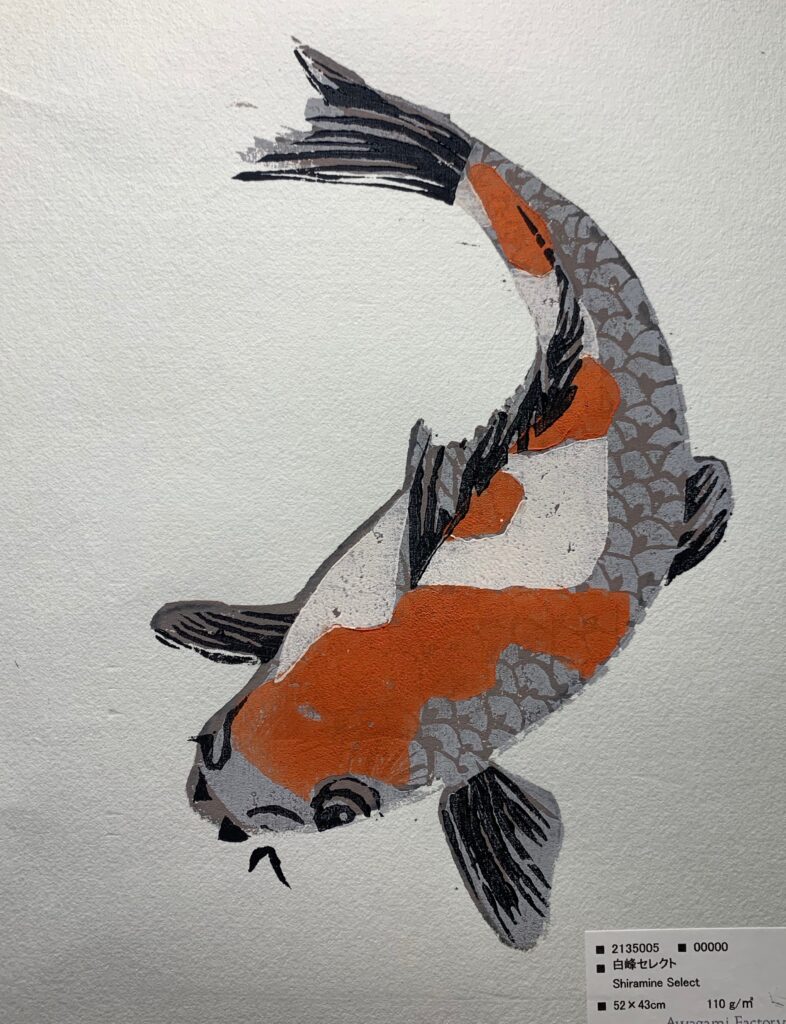
Koi 2, 17x24cm, Mokuhanga print, Stella MacDougall 2020
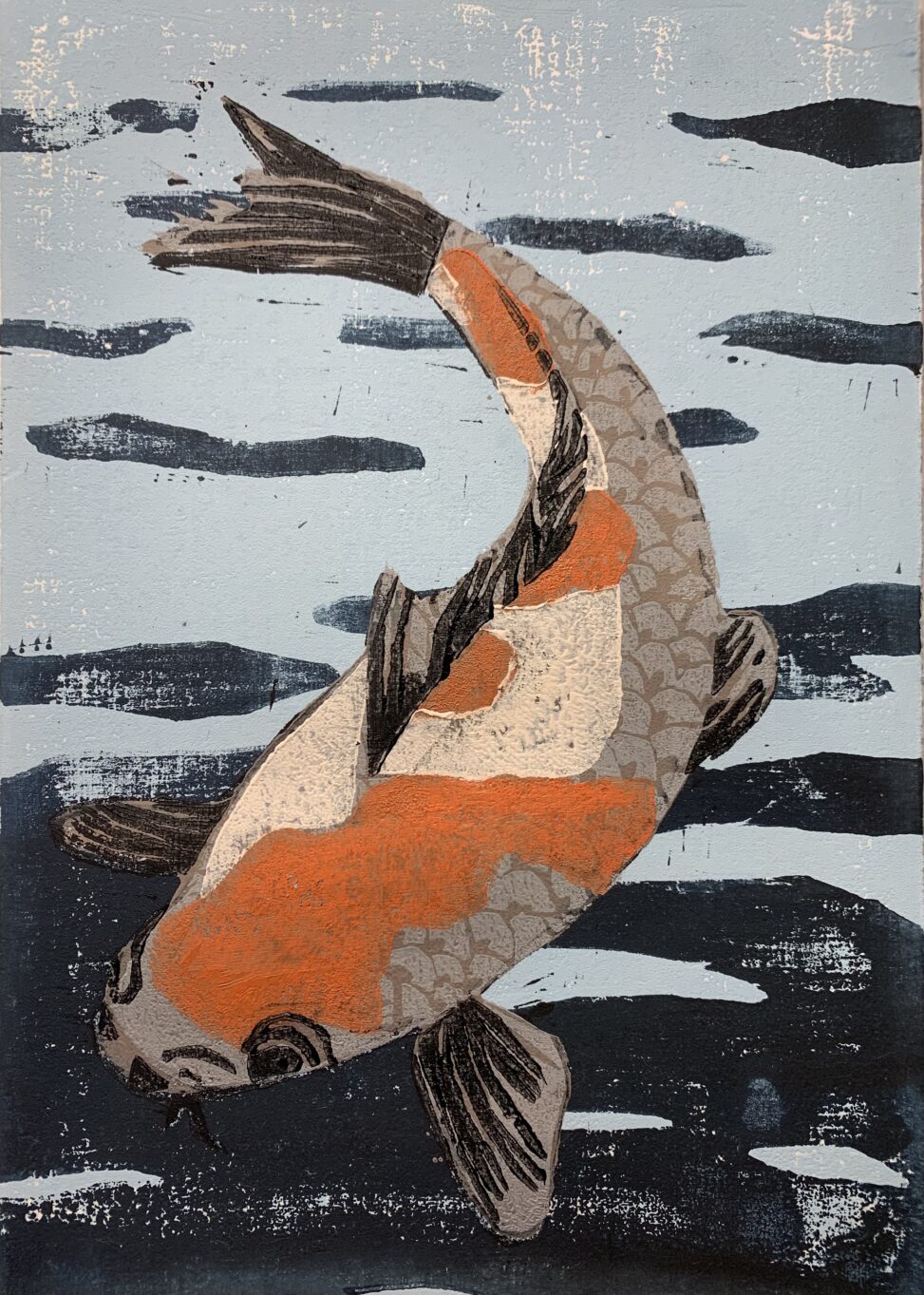


s2055120
Wow, I had never seen the process of printing in details before, your post is so interesting and informative, I love the colours too ^^
Anouk